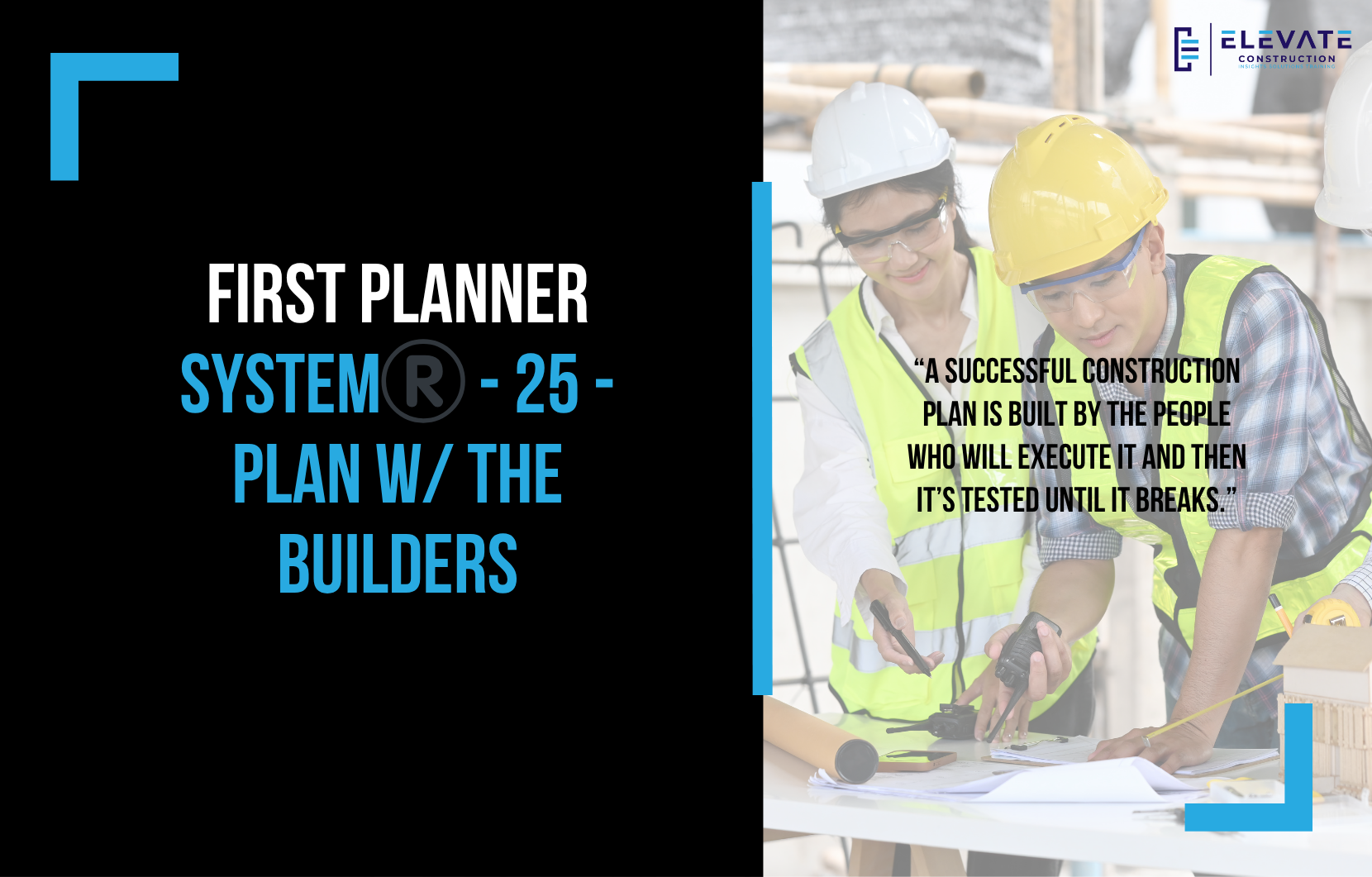Builder Collaboration: Does the Plan Belong to the Builders?
Once the design team has been supported and aligned to the budget, it’s time to transition into a serious, builder-led planning process. The only way to create a truly effective plan is to involve the people who will actually build the project the ones with real-world construction experience.
This process can be grouped into three stages:
- Gather the Builders
Bring the project’s superintendent and project manager into the pre-construction phase as early as possible. If they are unavailable due to other projects, have the project director, project executive, or operations manager involve them at critical points.
Avoid creating a plan in a silo and simply handing it off. The best approach is to have the PM and superintendent fully engaged in pre-construction planning. The PM should handle client interface, design coordination, budget management, and trade partner involvement. The superintendent should focus on strategy, scheduling, logistics, constructability reviews, mobilization, and the first 90-day plan.
- Make the Plan
Start by understanding all contract requirements, Division 1 specs, and the prime agreement. Gather every available resource drawings, procurement logs, schedules, logistics plans, and team charts. Conduct a detailed review to identify constraints, bottlenecks, and critical milestones.
Create a macro-level attack plan, noting zone breakdowns, phasing, weather impacts, permitting timelines, procurement durations, and coordination triggers. Build in milestones such as “dry-in,” “air-on,” MEP completion, and commissioning. This is your opportunity to identify risks and make strategic adjustments before work begins.
- Tear the Plan Apart
Hold a “fresh eyes” meeting with experienced builders and relevant trade partners. Review the entire plan with the sole purpose of finding weaknesses, risks, and opportunities for improvement. This is not a ceremonial review it’s a rigorous stress test to catch problems on paper before they appear in the field. Once the review is complete, make the necessary changes and set the project baseline for the owner. Remember, the baseline should not restrict flexibility in your production plan it’s simply a contractual reference point.
Key Takeaway:
A successful construction plan is built by the people who will execute it and then it’s tested until it breaks. By gathering the right builders early, making a detailed and realistic plan, and rigorously challenging it through a fresh eyes review, you dramatically increase the chances of finishing on time, on budget, and exactly as the owner expects.
If you want to learn more we have:
-Takt Virtual Training: (Click here)
-Check out our Youtube channel for more info: (Click here)
-Listen to the Elevate Construction podcast: (Click here)
-Check out our training programs and certifications: (Click here)
-The Takt Book: (Click here)
Discover Jason’s Expertise:
Meet Jason Schroeder, the driving force behind Elevate Construction IST. As the company’s owner and principal consultant, he’s dedicated to taking construction to new heights. With a wealth of industry experience, he’s crafted the Field Engineer Boot Camp and Superintendent Boot Camp – intensive training programs engineered to cultivate top-tier leaders capable of steering their teams towards success. Jason’s vision? To expand his training initiatives across the nation, empowering construction firms to soar to unprecedented levels of excellence.
On we go

